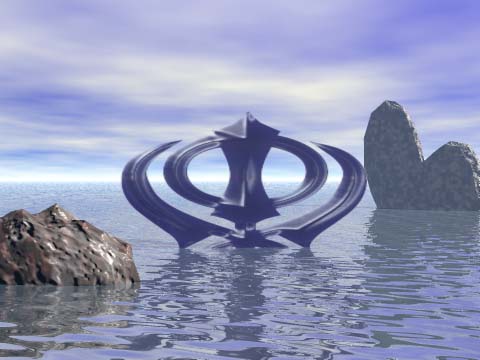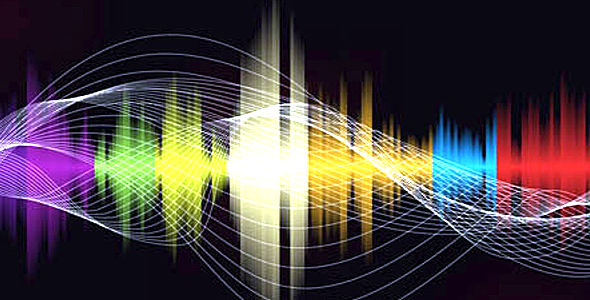FOLLOW:
Nada Yoga – Yoga of Sound By Frank Perry
 Nada Yoga is the ancient Yoga of Sound – both the inaudible and the audible.
Nada Yoga is the ancient Yoga of Sound – both the inaudible and the audible.
“Seek the Sound that never ceases, seek the sun that never sets.” Rumi
“The universe was manifested out of the Divine Sound; From It came into being the Light.” Shamas-i-Tabriz
“The Sound is inside us. It is invisible. Wherever I look I find it.” Guru Nanak
Nada Yoga consists of two words. The Word Yoga means Union with the Divine Source of All Life. As the Divine is living within All things, so it is that there are many Pathways to the Divine. The major ones are named Siva Yoga, Raja Yoga, Karma Yoga, Hatha Yoga, Jnana Yoga, Bhakti Yoga, and Mantra Yoga, whilst we also find many, many others including both Agni Yoga and Nada Yoga. In a sense Nada Yoga could be seen as a branch of Mantra Yoga as both are concerned with Sound. From the views of both the Hindu metaphysics of sound (which teaches that sound has a fourfold process) and the inclusive Tantric perspective, Nada Yoga could be said to incorporate and include all forms of Sound or Music. However, in practice the Nada Yogi places his or her focus upon what is termed the anahata nada or the inaudible (or a more literal translation: ‘unstruck’) sound. That is to say a sound that is not made as a result of two or more objects striking one another. It is, in fact, a sound not coming to the human ear from outside of the body but, rather, from within. Like many other kinds of yoga, one does not need to be a devotee of this path in order to have the experience. Just as one needn’t be a Bhakti before experiencing union heart-to-heart with the Supreme Being. Because such experiences are rooted in Absolute reality, they are ever-present aspects of That Reality that can appear at any instant to any individual found to be providing the correct conditions suitable for receiving the experience.
There are three traditional forms of chanting in Nada Yoga: mantras, kirtans, and bhajans. These divisions are not to be confused – as they often are in workshops. Because these have generally been composed by yogis or saints, they are considered to carry a pure energy and to have a harmonising effect upon the physical body, astral body and mind. Mantra derives from two Hindu words Manas and Tra – manas meaning mind and tra meaning protection. How do we protect our minds? This refers to assisting our mind to stop its aimless wandering whilst trying to meditate. Via mantra – the repetition of certain sacred sounds – the mind attempting to meditate is prevented from its aimless wanderings and is given a focus to aid its concentration. Once we can find the quiet mind, it becomes possible to hear this inner sound that lies beneath, behind, and within all sounds. Mantra is, therefore, concerned with the power of sound to transform our consciousness/being. Likewise, Nada Yoga too concerns itself with Self-Realisation through the transforming power of sound; only of inaudible sound – which is not to be confused with supersonics (which is still a vibration that can be measured with scientific instruments); the sounding of the Inner Being – Divine Sound. Mantra or the making of sacred music are thus considered as outer expressions of Nada Yoga and if scientists can demonstrate that machines can utilise mechanically-produced sound vibrations for healing, then imagine what using our own Voice can do!
Therefore, Nada Yoga is the Path of Union with the Divine through Sound or Music. “In the beginning was the Word. And the Word was with God and the Word was God.” So begins St. John’s Gospel. Many other great religions also state that the origin of Life is Sound or Vibration. Once we are able to reach that place of great stillness and silence deep within our hearts, we are able to hear this ‘Music of the Spheres’; we are able to approach the Source of our being through this gateway of Vibration – via this Path of Sound. The yogi mystics of India speak of outer sound, then of hearing ten inner sounds and finally hearing the One Sound – Divine Sound. This is a path of spiritual practice – attuning to this inaudible sound and thereby hearing the Voice of the inner Teacher – the Word of the Supreme Transcendent Oneness. Samadhi, or union with the Atman, or totality, can be entered into through Nada Yoga. At one and the same time incorporating the Transcendent and the Divine Imminent. After attuning to this quiet inner ‘voice’ deep within, it eventually becomes possible for us to find that inner stillness and silence at any time in our lives and most especially during times of crisis, stress, or misfortune and so enable ourselves to face such difficulties (and also to transform and evolve the inner elements of our being) with the supreme strength of the Transcendent Sound of Absolute Oneness and so receive the Great Love of the Divine Comforter. Becoming at-one with this Divine Sound-current opens us up to resonating with that Stream of Universal Love consciousness that flows throughout the entire body of Nature throughout all the galaxies and entire universe. I reach this conclusion also because the term Anahata is given to the Heart Chakra and it is likewise stated that one cannot hear this inner sound until one has progressed along the spiritual pathway to the level of the Heart Chakra and has, therefore, been born again within the Heart of the Divine Being.
It was during the late 60’s and early 70’s that I began having my own mystical experiences of the world of sound. I later discovered that these were a form of Nada Yoga. Then in the late 80’s and early 90’s I would be quite regularly invited to attend certain weekends at Hourne Farm where the Sound Research Group met. It was at one such weekend in the late 80’s that we all settled down to try traditional Nada Yoga practices and I immediately heard the Anahata Nada at it’s highest level. I can’t recall whether or not anybody else said that they had experienced it. Apparently, it is not impossible for people to try the exercises, sometimes for many years or decades, and not have a single experience. I naturally incorporated the sound experience (not the traditional exercises) into my daily routines – as I can tune-in at will. Again, it was whilst attending a Sound Research weekend at Hourne Farm that we were introduced to Siva Yoga and each of us was leant a Siva Linga to meditate with. Afterwards, we were each asked what we experienced. After I related my own experiences the leader responded by giving me a Siva Linga to keep (he was given it by Siva Yoga Master Kumaraswami). It was also during another such weekend that Muz Murray was given one or two sessions to lead us in mantra. He also asked concerning our experiences. I had experienced specific shapes and colours in a certain chakra whilst chanting and this was confirmed to be what the yogis predicted for that chant. Whilst at Emerson College at Forest Row I was part of the teaching group and after one of the eurhythmy sessions in the morning the teacher asked me if I’d been reading an extremely rare writing by Rudolph Steiner concerning the correct body position for one of the intervals because apparently I had assumed this absolutely correct position whilst doing the exercise. Being as I had never studied Eurythmy, let alone rare lecture notes, I had never read any such articles but rather had responded intuitively.
In my opinion, it is inappropriate for anyone to teach Nada Yoga who hasn’t experienced the Inner Sound. As with all Yogas really, the only teachers are those who have attained the goal and are therefore truly able to act as a reliable and trustworthy guide who can demonstrate to us the highest example of the object of our aims. We live in a culture rather dominated by the organ of the eye. Some ancient cultural traditions were of an oral nature and of these Nada Yoga must rank as one of the highest. Simply reading or studying the subject alone from written sources is foreign to the practise of real Nada Yoga.

The Power of the Word
We find in the Bible the words: ‘In the beginning was the word, and the word was God’, and we also find that the word is light, and that when that light dawned the whole creation manifested. These are not only religious verses; to the mystic or seer the deepest revelation is contained in them.

The Mysticism of Sound
Abstract sound is called sawt-e-sarmad by the Sufis; all space is filled with it. The vibrations of this sound are too fine to be either audible or visible to the material ears or eyes, since it is even difficult for the eyes to see the form and color of the ethereal vibrations on the external plane.

Sikhism
A progressive religion well ahead of its time when it was founded over 500 years ago, The Sikh religion today has a following of over 20 million people worldwide and is ranked as the worlds 5th largest religion. Sikhism preaches a message of devotion and remembrance of God at all times, truthful living, equality of mankind and denounces superstitions and blind rituals.

Naam or Word – Hari Ras
Now we come to another term, “Hari Ras” or Divine intoxication. Whoever communes with the Word, Shabd or Naam feels an exhilarating effect, too sweet and too absorbing for words. Far from being inebriating and stupefying it raises one into a state of super-consciousness and universal awareness.

Vipassana Meditation: The Soothing Divinity of Sound
The Himalayan masters of ancient India developed the “sound current” that is now known as the “divine sound.” The divine sound is the foundation used for practicing various forms of yoga—nada, sahaj, Babaji, kriya, and Sikh practices such as shabda yoga.